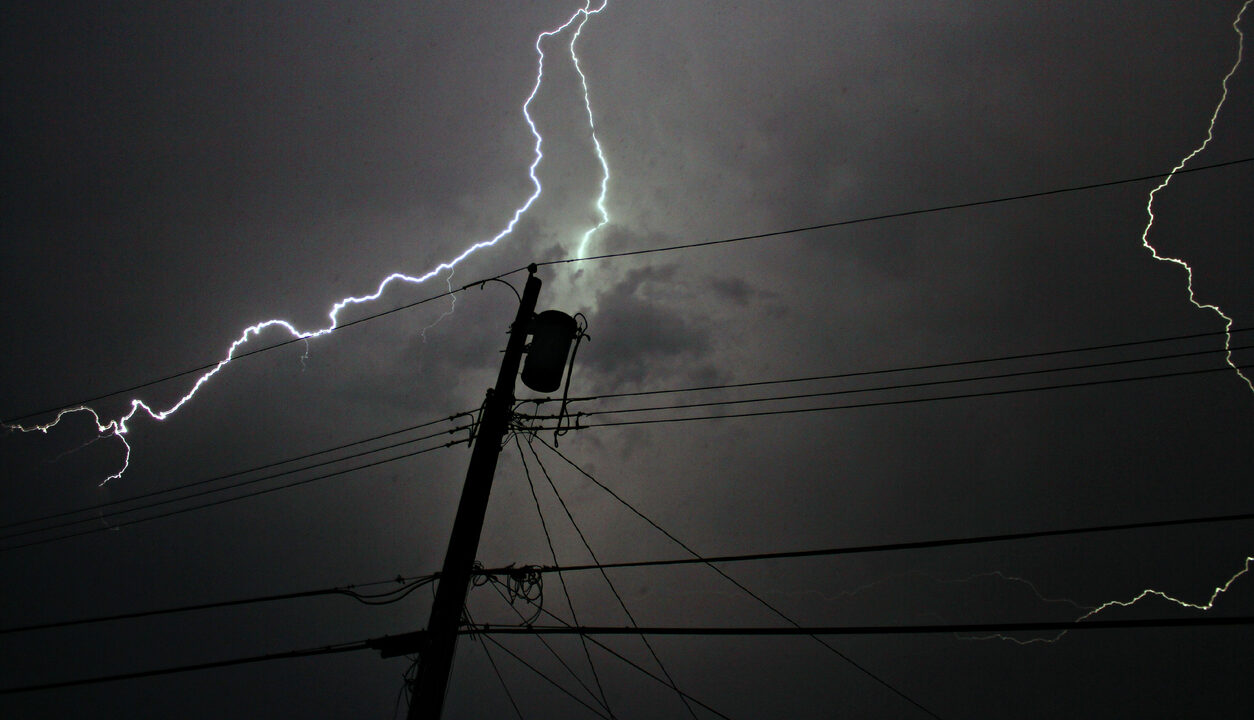Fact Sheet

Avoiding Deadly Blackouts
Summary
- Pennsylvania urgently needs a plan to restore grid reliability and prevent electricity blackouts from extreme cold weather. Winter Storm Elliot in 2022 almost brought widespread blackouts, but it was mild compared to past cold waves.
- Elliot’s low in Philadelphia was 7 degrees Fahrenheit, while Pittsburgh saw minus 5 degrees. In sharp contrast, on January 19, 1994, the temperature in Philadelphia dropped to negative 5 degrees and in Pittsburgh to negative 22, both much colder than Elliot.
- The General Assembly must prioritize the creation of a Blackout Prevention Plan.
- Lawmakers should focus on measures such as adding enough generating capacity, developing on-site fuel reserves, ensuring equal baseload and dispatchable generation replaces that of retiring baseload and dispatchable facilities, and hardening the electricity infrastructure against extreme cold weather.
Blackouts Are Deadly and Destructive
The February 2021 extreme cold weather crisis in Texas is a good example of what Pennsylvania must avoid.
Blackouts caused by Winter Storm Uri were responsible for hundreds of deaths, with estimates ranging from nearly 250 to over 700, as four million people were without power for days in sub-freezing temperatures.[1]
The crisis began around 1:00 a.m. on February 15th with no solar power available and low wind. Gas-fired generators became progressively dysfunctional due to the cold.
The U.S. Energy Information Administration defines baseload production as “the minimum amount of electric power delivered or required over a given period of time at a steady rate,” and “the generating equipment normally operated to serve loads on an around-the-clock basis.” Texas had systematically reduced its reliable baseload power from coal with intermittent power from wind. With 69 percent of generation fueled by natural gas or wind, system failures caused a crisis.[2]
Insurance claims due to damages from the prolonged outages reached $10 billion, according to a lawsuit filed by Texas insurance companies.[3]
Winter Storm Elliot Was a Warning
Almost a year after the Texas disaster, Elliot struck Pennsylvania on Christmas Eve with a 7-degree low in Philadelphia and a low of minus 5 in Pittsburgh.[4] The Pennsylvania-New Jersey-Maryland Interconnection (PJM), the grid manager across our commonwealth plus 12 other states, narrowly escaped a cold weather blackout similar to Texas. Again, the loss of gas-fired power was widespread, but unlike Texas, Pennsylvania’s coal generators were able to supply emergency power.[5]
Unfortunately, Elliot was mild compared to prior storms, and it is these extreme cases of cold that should be the focus of those managing our electricity system.
Reserve Margins Are Dangerously Low
The North American Electric Reliability Corporation (NERC) says that during normal weather PJM has a healthy reserve margin of around 30 percent.[6] However, Elliot’s relatively mild cold snap nearly wiped out PJM’s seemingly comfortable margin. If much colder temperatures, such as those in 1994, struck, widespread deadly blackouts would certainly occur.
The Pennsylvania Public Utility Commission (PUC), in the “Electric Power Outlook” report released in August 2023, succinctly states:
The Commission notes here that much of the stability of the electric grid that serves Pennsylvania, and the region, depends upon the ability of reserve generation to operate during extreme cold. That ability depends upon the natural gas supply system, the other fuel delivery systems, and the generator’s ability to start, operate, and continue operations during extreme weather situations such as severe cold events.[7]
Pennsylvanians also have increased worries about grid reliability. In a March poll, 60 percent of likely Pennsylvania voters expressed concern about the reliability of the state’s electricity grid, including majorities of all political parties.[8]
Principles for Blackout Prevention Planning
Focus on the worst-case scenarios.
- These include very cold windless nights, protracted periods of cold temperatures and low wind periods, and other scenarios where solar and wind resources are not available.
- Precedents should reflect extreme weather cases, such as the brutal January 1994 cold wave.
Harden the present electric power infrastructure and natural gas supply system.
- Encourage the construction of strategically located gas-fired generation. Compared to coal and nuclear, gas plants are relatively quick to build and best suited to avert near-term energy shortages.
- Allow construction of pipelines to supply fuel to power plants. Seventy percent of Pennsylvania voters support such infrastructure development, including building more natural gas pipelines to transport gas.[9]
Maintain on-site fuel reserve power.
- Retain the present coal-fired power fleet and nuclear plants and build additional modern generating capacity with on-site fuel reserves. These plants have huge amounts of fuel reserves at their sites protecting them against supply interruptions that are a vulnerability of gas-fired generators.
Consider a tangible target such as achieving and maintaining a 30 percent reliability margin for Pennsylvania utilities during peak projected demand; ensuring reliability during extreme cold events.
[1]Justine Calma, “Go Read This Investigation into the Real Death Toll from the Texas Freeze,” The Verge, May 27, 2021, https://www.theverge.com/2021/5/27/22456856/deaths-undercount-texas-freeze-power-outage.
[2]Energy Institute, “The Timeline and Events of the February 2021 Texas Electric Grid Blackouts,” University of Texas at Austin, July 2021, https://energy.utexas.edu/sites/default/files/UTAustin%20%282021%29%20EventsFebruary2021TexasBlackout%2020210714.pdf#page29; see also Brent Bennett, Katie Tahuahua, and Mike Nasi, “Pushed to the Brink: The 2021 Electric Grid Crisis and How Texas Is Responding,” Texas Public Policy Foundation, August 2022, https://www.texaspolicy.com/wp-content/uploads/2022/08/2022-08-RR-LP-PushedtoBrinkElectricGridCrisis-BennettTahuahuaNasi.pdf.
[3]Lyle Adriano, “Over 100 Insurers Sue Texas Electric Authority, Utilities over 2021 Winter Storm Damage,” Insurance Business, January 10, 2022, https://www.insurancebusinessmag.com/us/news/breaking-news/over-100-insurers-sue-texas-electric-authority-utilities-over-2021-winter-storm-damage-321490.aspx.
[4]Extreme Weather Watch, “Philadelphia Weather in 2022,” accessed February 20, 2024, https://www.extremeweatherwatch.com/cities/philadelphia/year-2022#lowest_temperatures; Extreme Weather Watch “Pittsburgh Weather in 2022,” accessed February 20, 2024, https://www.extremeweatherwatch.com/cities/pittsburgh/year-2022#lowest_temperatures.
[5]Energy Ventures Analysis, “Operation of the US Power Generation Fleet During Winter Storm Elliott,” America’s Power, February 2023, https://americaspower.org/issue/operation-of-the-u-s-power-generation-fleet-during-winter-storm-elliott/.
[6]North American Electric Reliability Corporation, “2023 Long Term Reliability Assessment,” (Washington, DC: NERC, December 2023), 77, https://www.nerc.com/pa/RAPA/ra/Reliability%20Assessments%20DL/NERC_LTRA_2023.pdf.
[7]Paul T. Diskin, “Electric Power Outlook for Pennsylvania 2022–2027,” (Harrisburg, PA: Pennsylvania Public Utility Commission, August 2023), 3, https://www.puc.pa.gov/media/2527/electric-power-outlook-for-pennsylvania-2022-2027-8-29-2023-final-draft-with-covers.pdf.
[8]Commonwealth Foundation, “Perspectives on Pennsylvania Energy: A Public Opinion Survey” (Conducted by Public Opinion Strategies, March 2024), March 19, 2024, www.commonwealthfoundation.org/pennsylvania-energy-public-opinion-survey/.
[9]Commonwealth Foundation, “Perspectives on Pennsylvania Energy.”